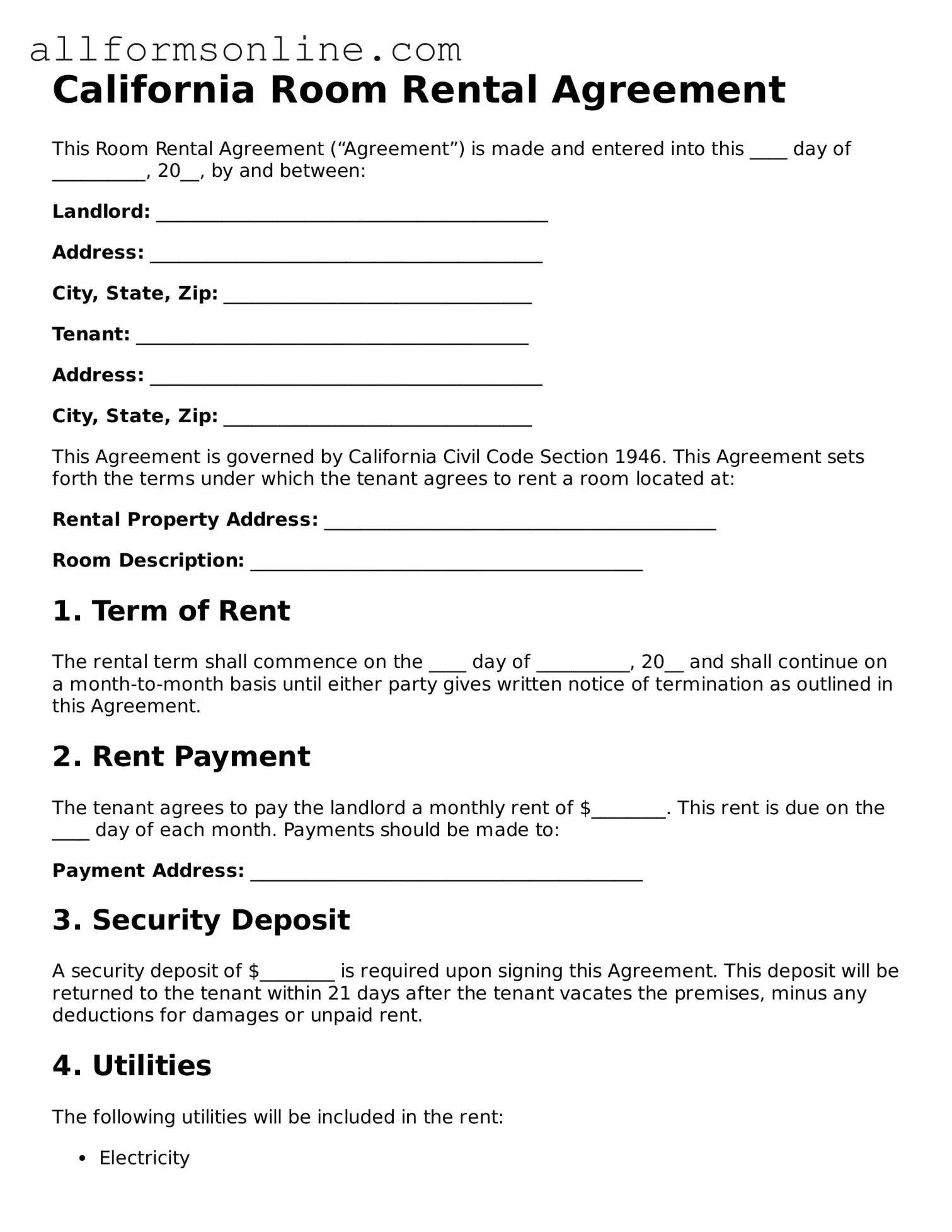What is a California Room Rental Agreement?
A California Room Rental Agreement is a legal document that outlines the terms and conditions between a landlord and a tenant for renting a residential property. This agreement details the rights and responsibilities of both parties, including rent amount, payment due dates, security deposits, and maintenance obligations. It serves to protect both the landlord's property and the tenant's right to a safe and habitable living environment.
What key elements should be included in the agreement?
The agreement should include essential details such as the names of the landlord and tenant, the rental property address, the lease term (duration of the rental), the amount of rent and due dates, security deposit requirements, and any rules regarding pets or maintenance. Additionally, it should specify the process for terminating the agreement and any penalties for breaking the terms.
How is the security deposit handled in a Room Rental Agreement?
In California, the security deposit amount is typically limited to two months' rent for unfurnished properties and three months' rent for furnished ones. The agreement must clearly state the amount of the security deposit and the conditions under which it may be withheld after the tenant vacates the property. Landlords are required to return the deposit within 21 days of the tenant moving out, along with an itemized list of any deductions made.
Can a Room Rental Agreement be modified after it is signed?
Yes, a Room Rental Agreement can be modified, but both parties must agree to any changes. It is advisable to document modifications in writing and have both the landlord and tenant sign the updated agreement. This helps prevent disputes and ensures that both parties are aware of the new terms.
What happens if a tenant violates the terms of the agreement?
If a tenant violates the terms of the Room Rental Agreement, the landlord may have several options, depending on the nature of the violation. Common actions include issuing a notice to cure or quit, which gives the tenant a chance to correct the violation, or beginning eviction proceedings if the violation is severe. It is crucial for landlords to follow legal procedures to avoid potential disputes.
